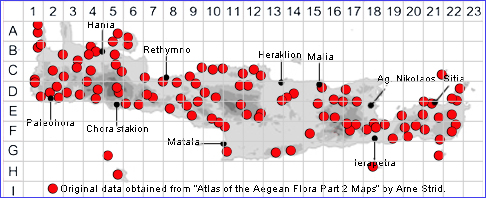
SPECIES DESCRIPTION
ERICA MANIPULIFLORA
Family and Genus:- See- ERICACEAE
Common Names:- None
Homotypic Synonyms:- Erica forskalii, Erica verticillata.
Meaning:- Erica (L) Pliny's version of an ancient Greek name.
Manipuliflora (L) Grouped, with a few flowered clusters.
General description:- Spreading to erect shrub to 1m tall.
Stems:-
1) Up to 50(-75) cm, decumbent to ascending, rarely erect, straight or somewhat
flexuous. Young stems glabrous or puberulent.
Leaves:-
1) 4-8 mm, in whorls of 3-4, erect to somewhat spreading.
Flowers:-
1) Inflorescences, not more than 6 cm, usually lax and intercalary or terminal and
subcapitate.
2) Sepals, 1 mm.
3) Corolla, 3-3·5 mm, pink, broadly bell-shaped (campanulate), with erect lobes.
4) Anthers, 0·7-1 mm, with widely separated, divergent lobes 2-2½ times as long as
wide.
Fruit:-
1) Loculicidal capsule.
Key features:-
1) Leaves, 4-8 mm, mostly erect or erecto-patent.
2) Anthers, 0·7-1 mm
Habitat:- Rocky slopes with scrubland vegetation and open dry shrubby vegetation.
0-700(-1200) m. on various substrates.
Distribution:- Mediterranean region from Italy and the W Balkans to Lebanon.
Widespread and common on Crete.
Flowering time:- (May-)Sept-Nov.
Photos by:- Steve Lenton
